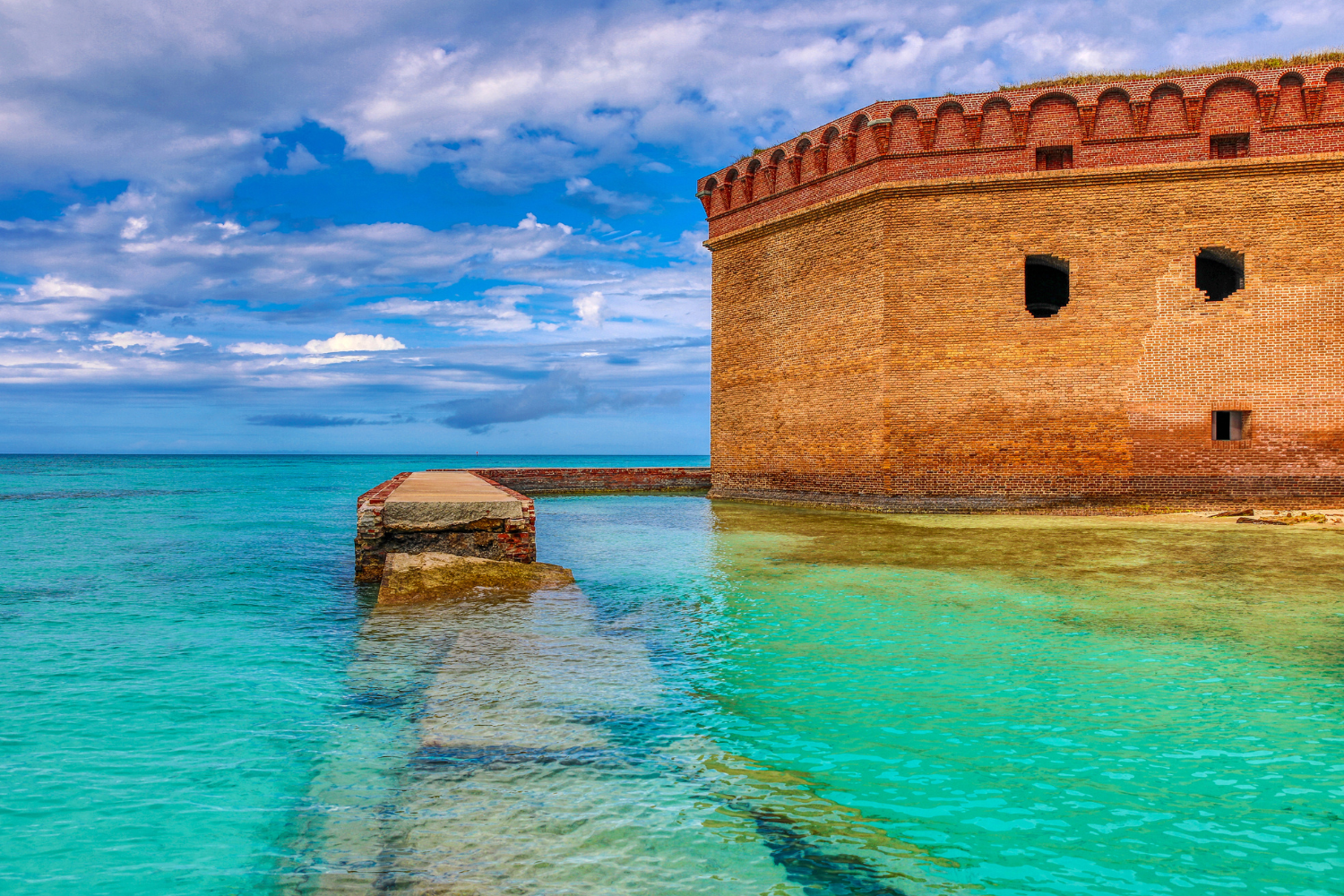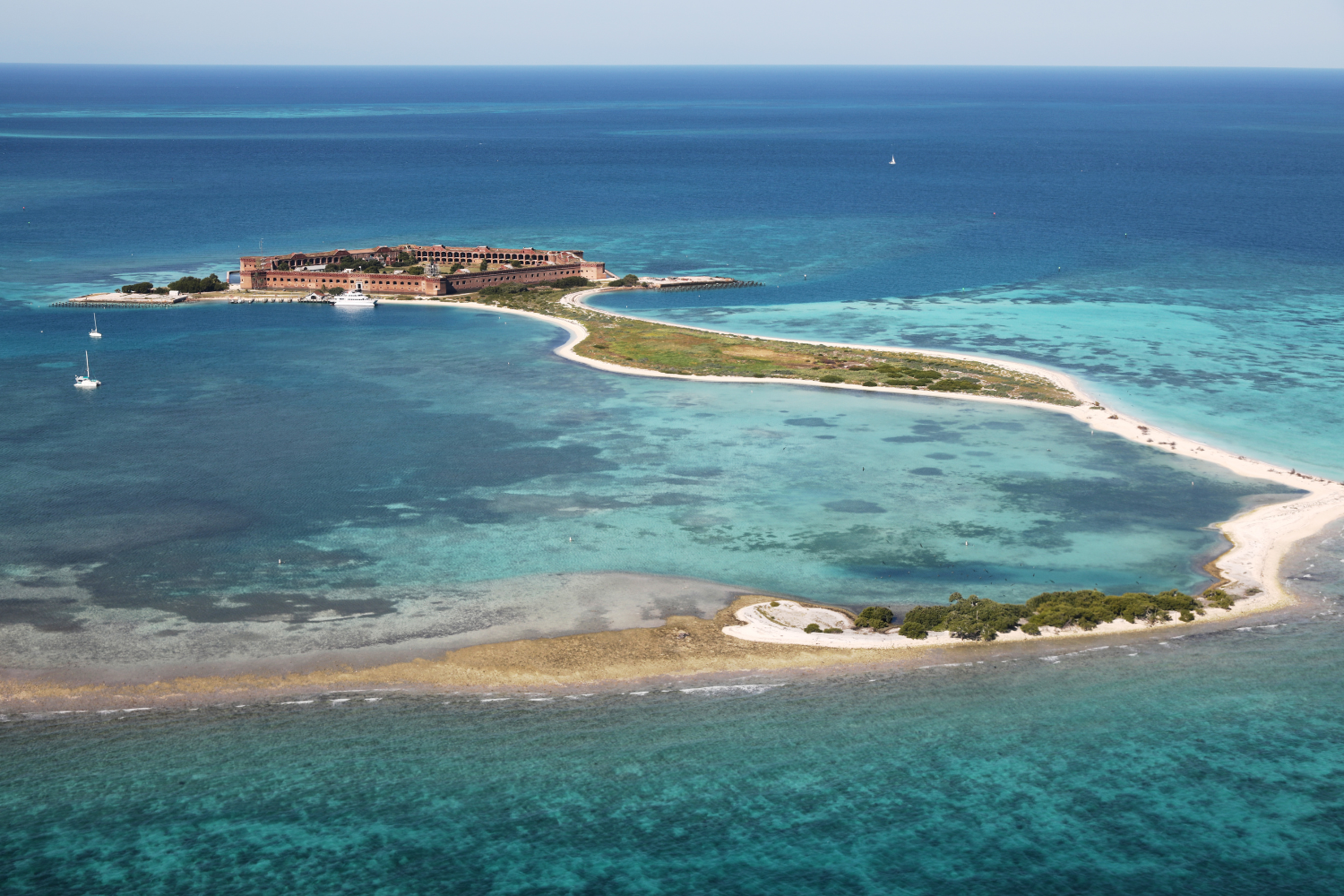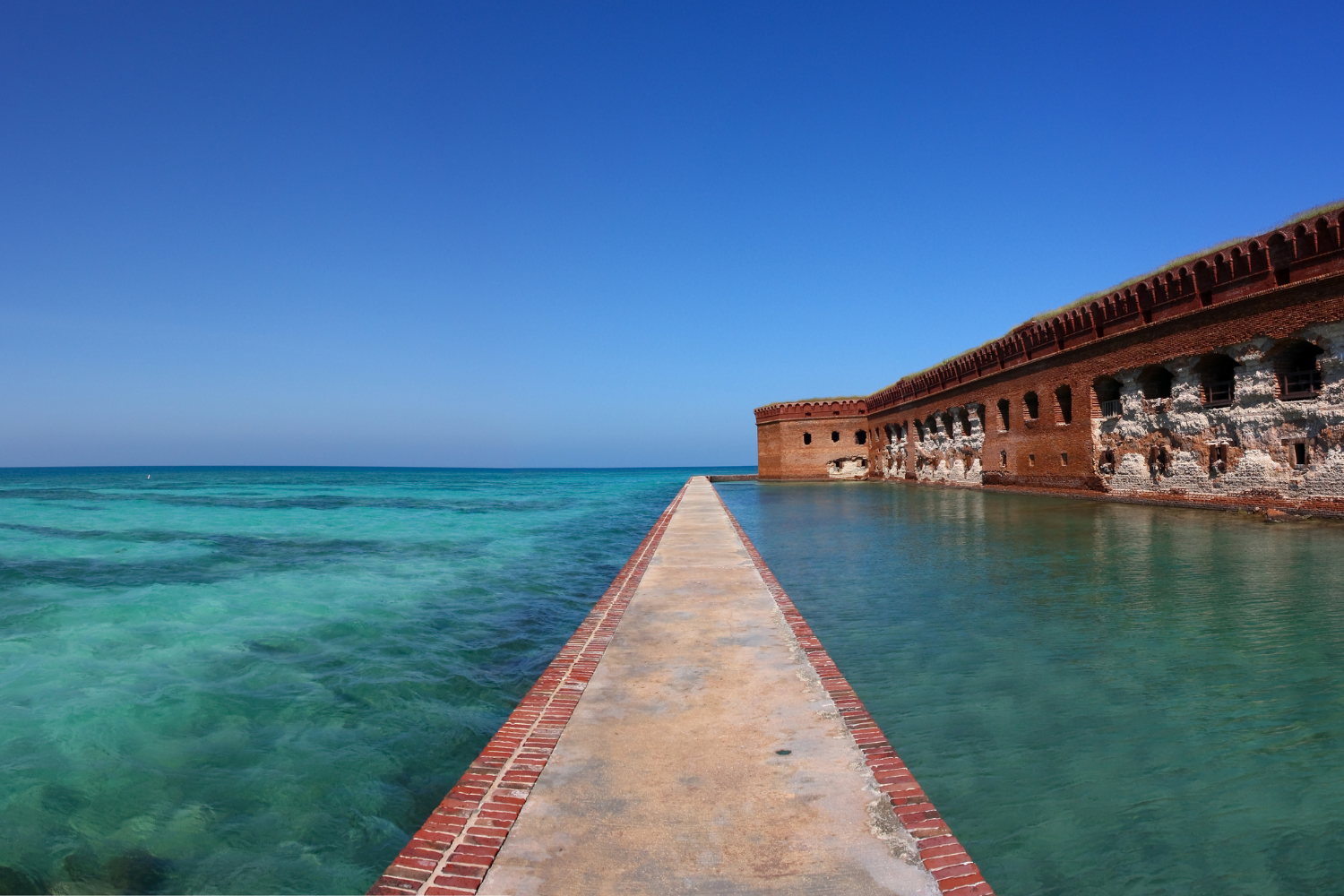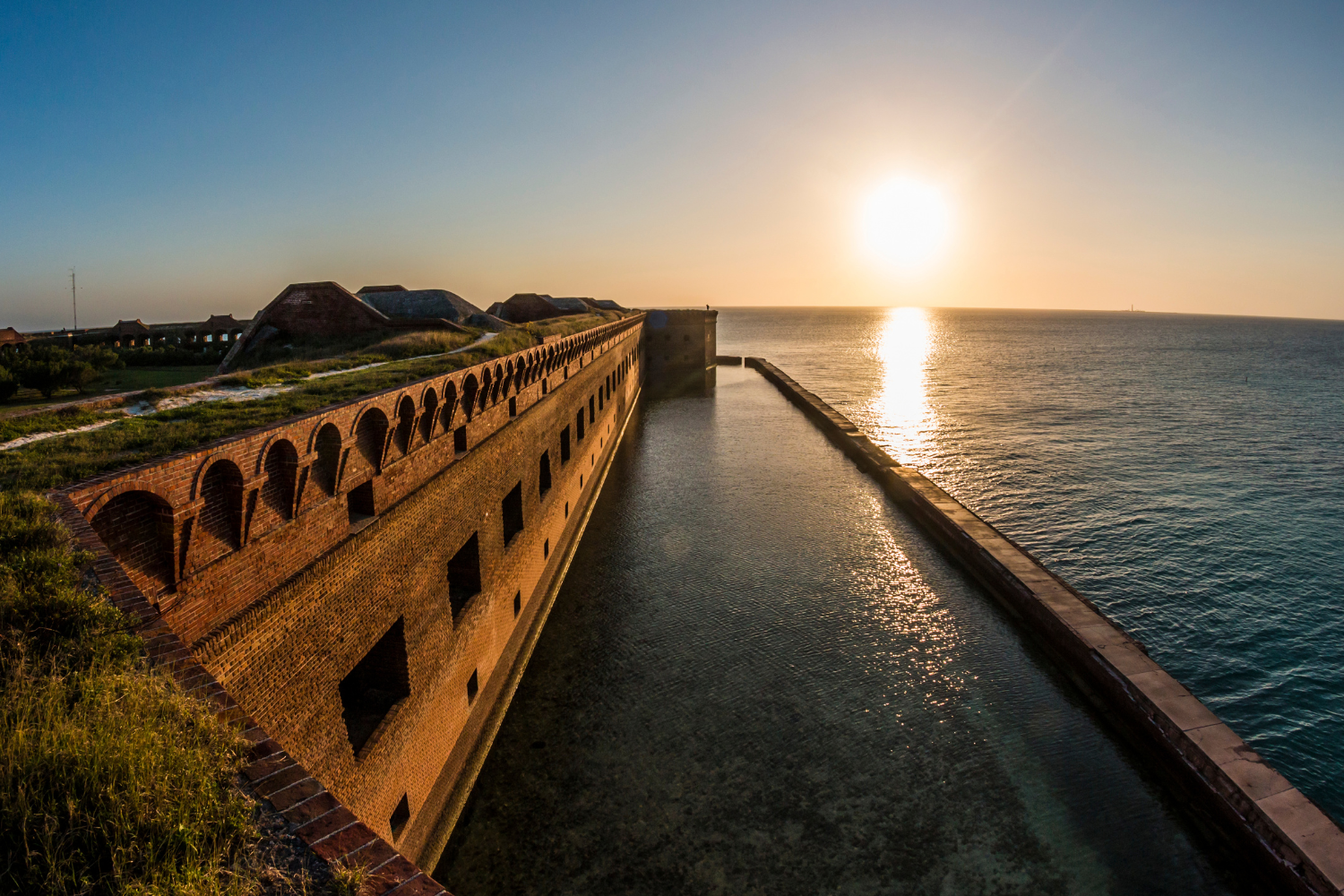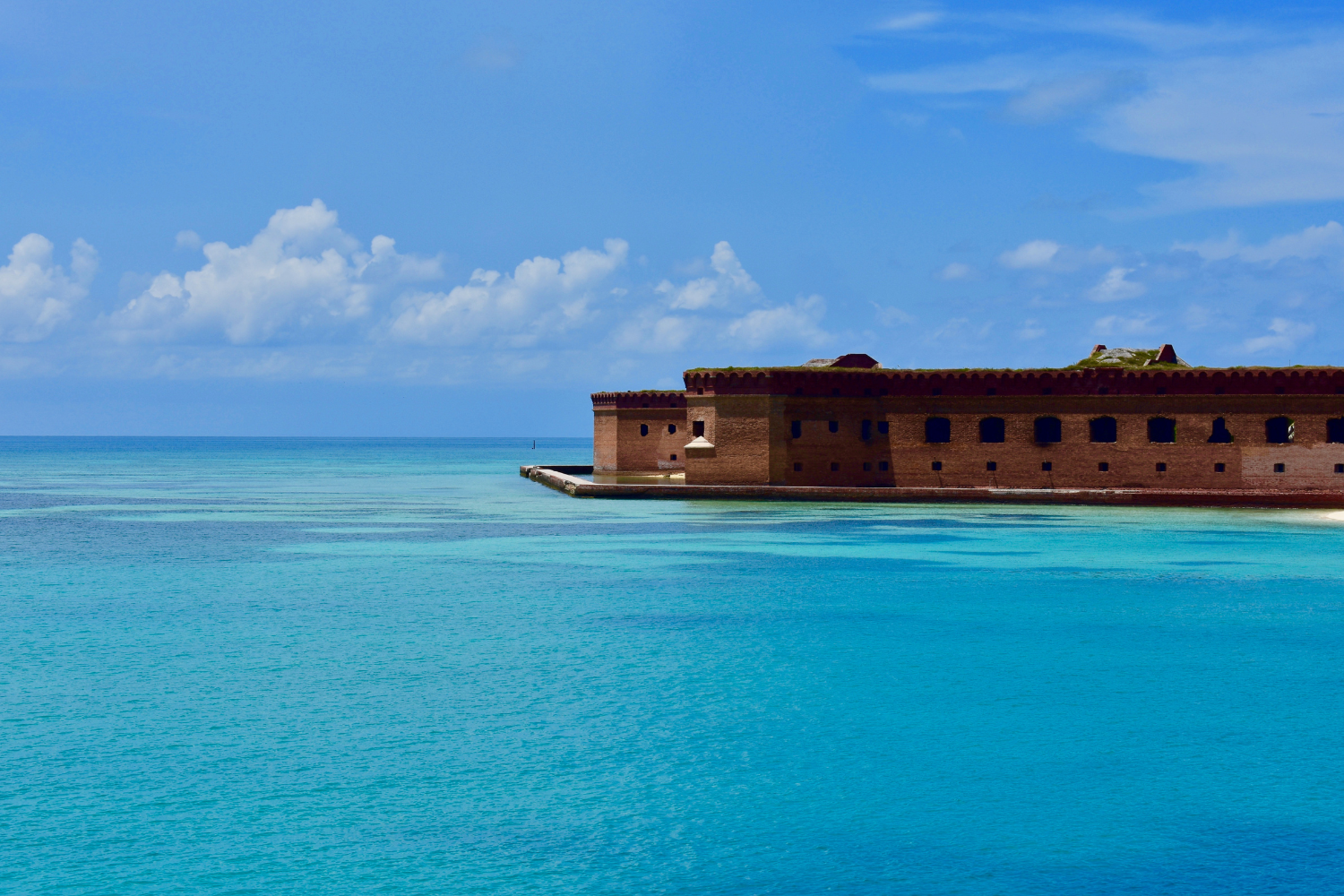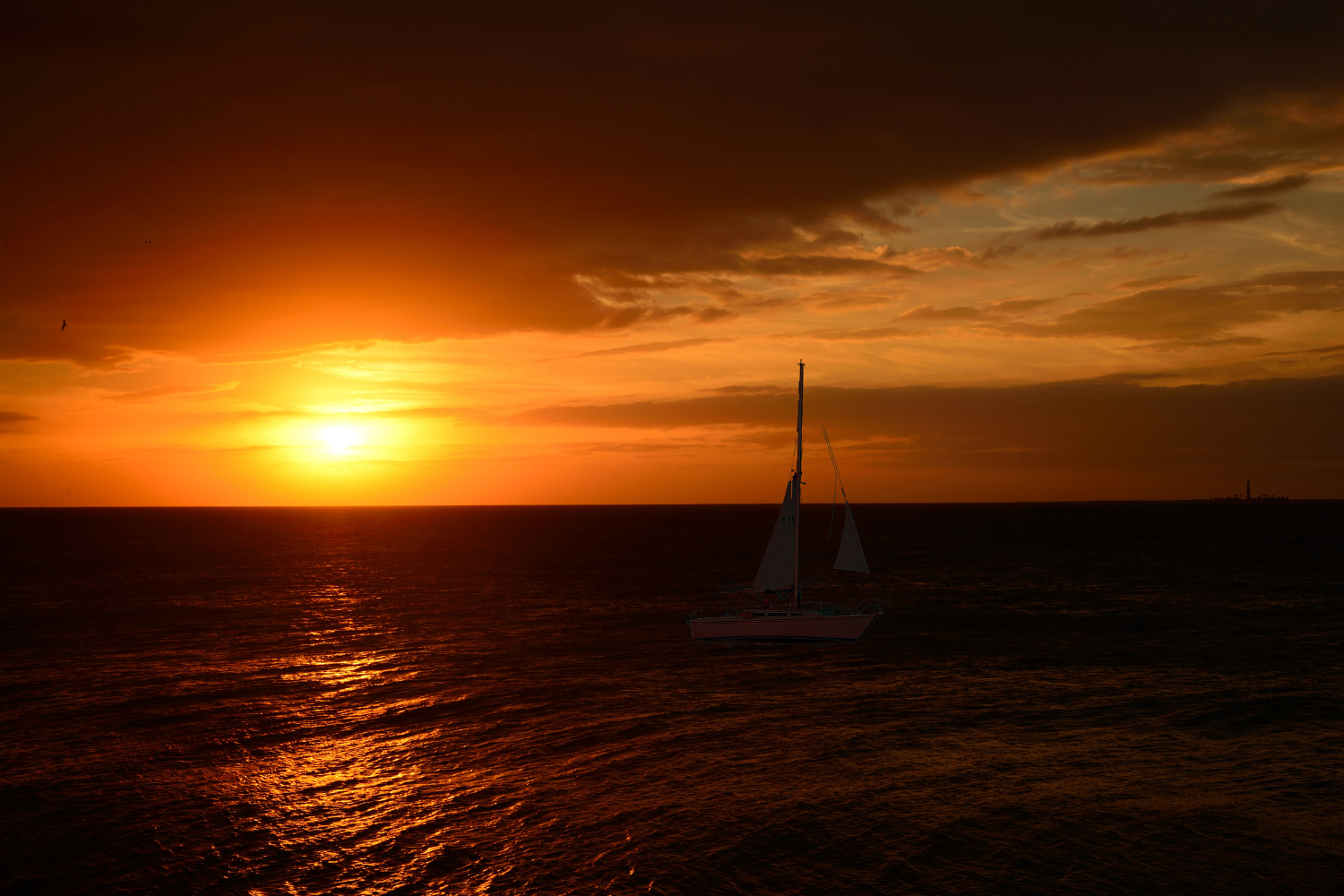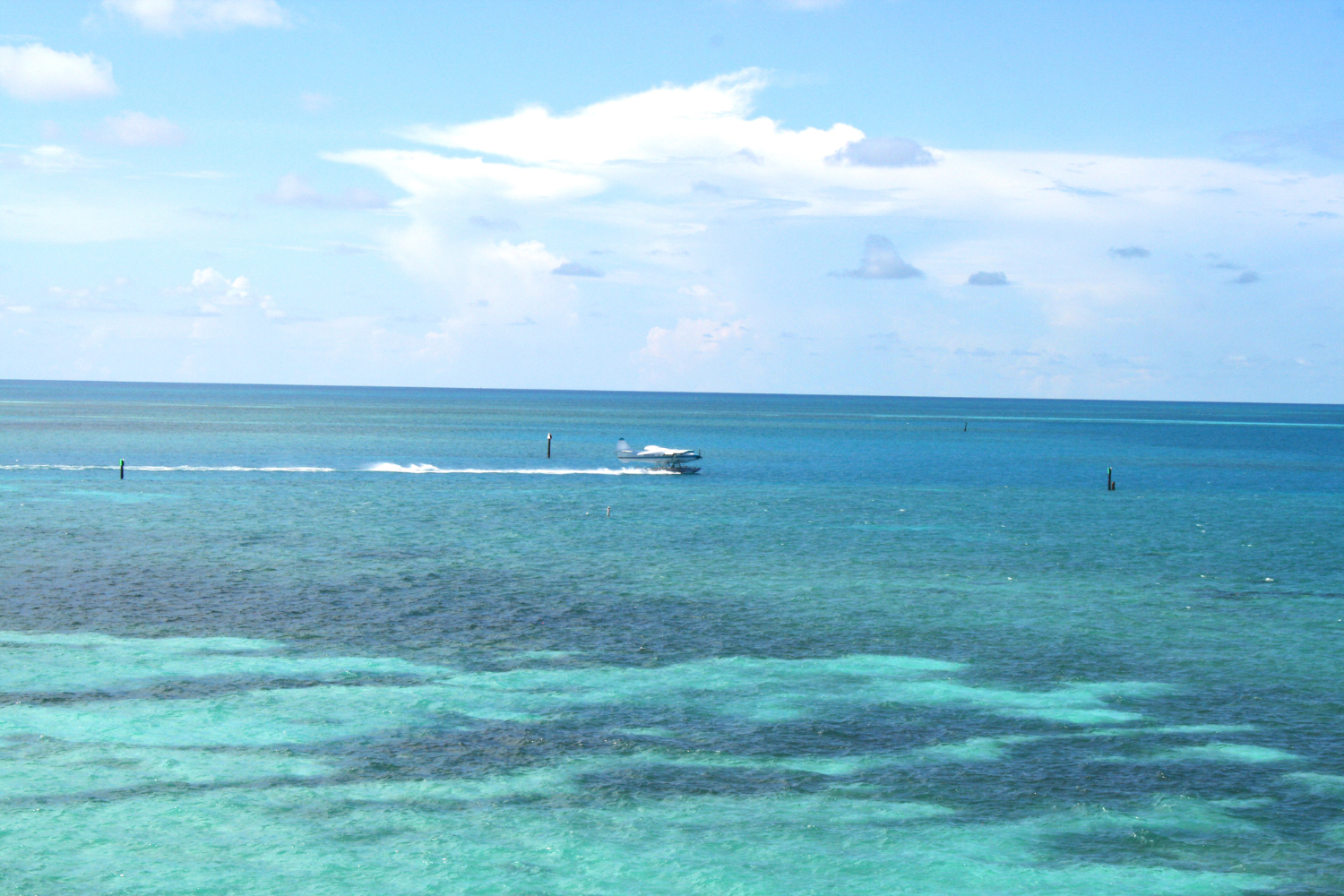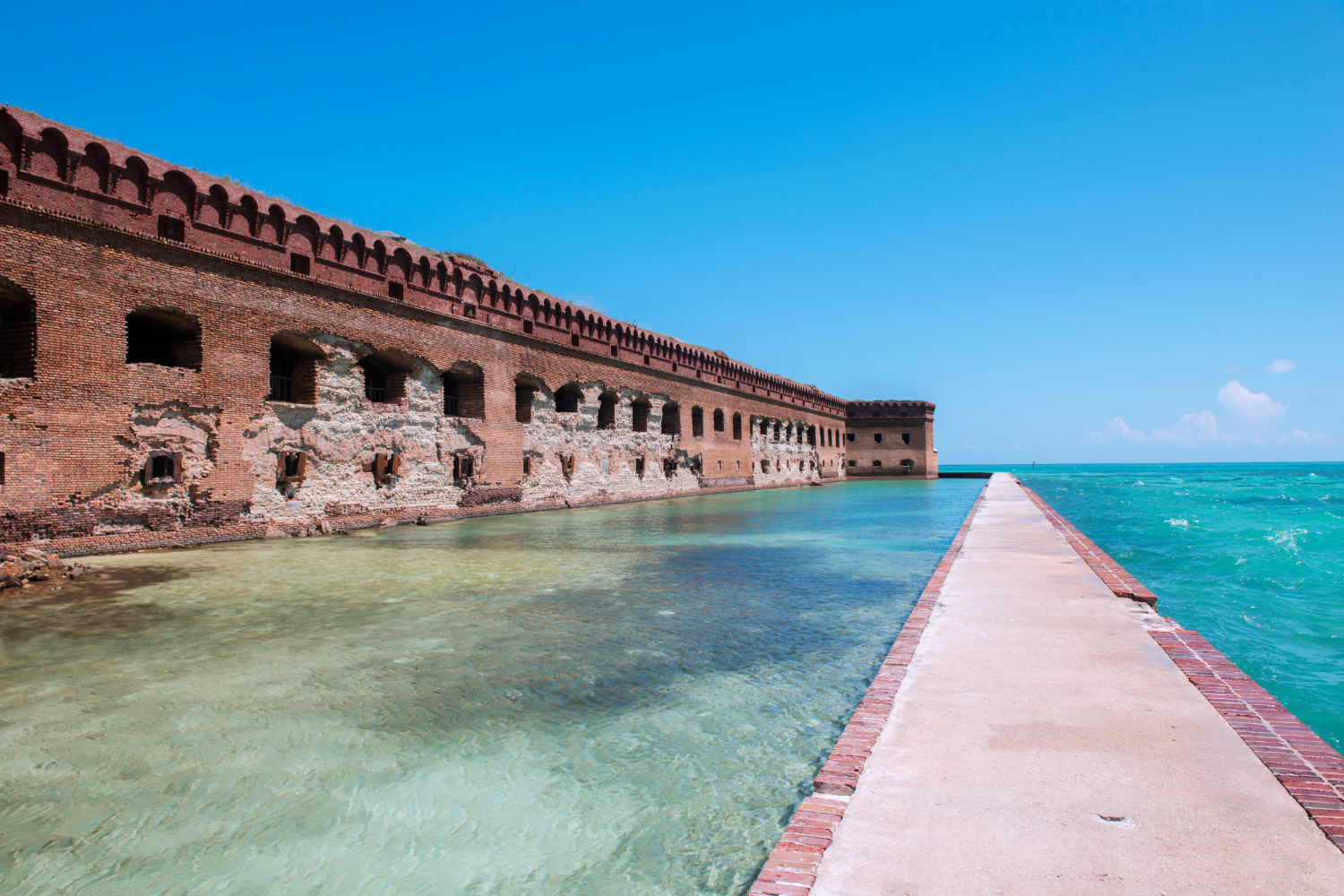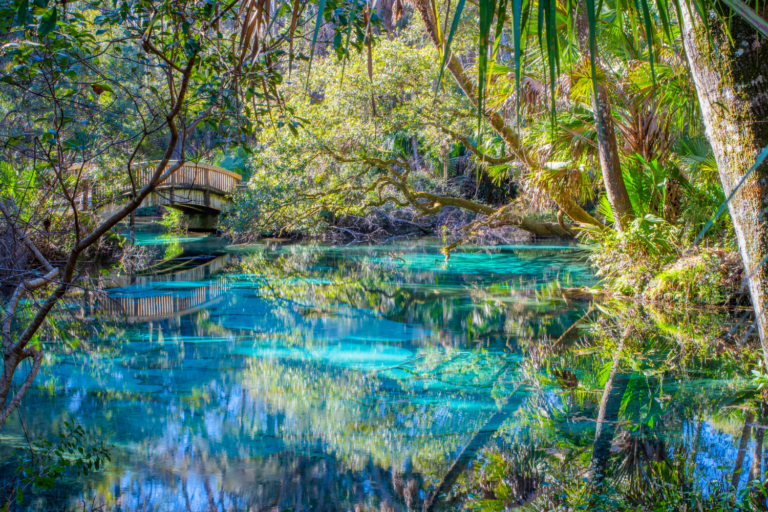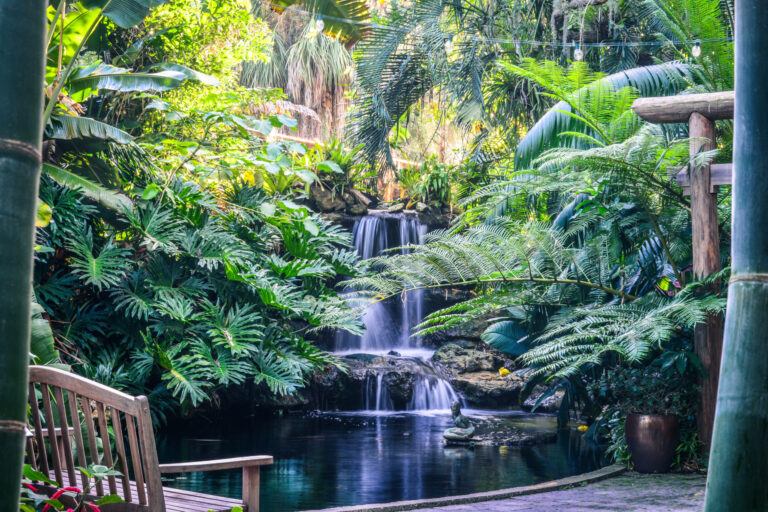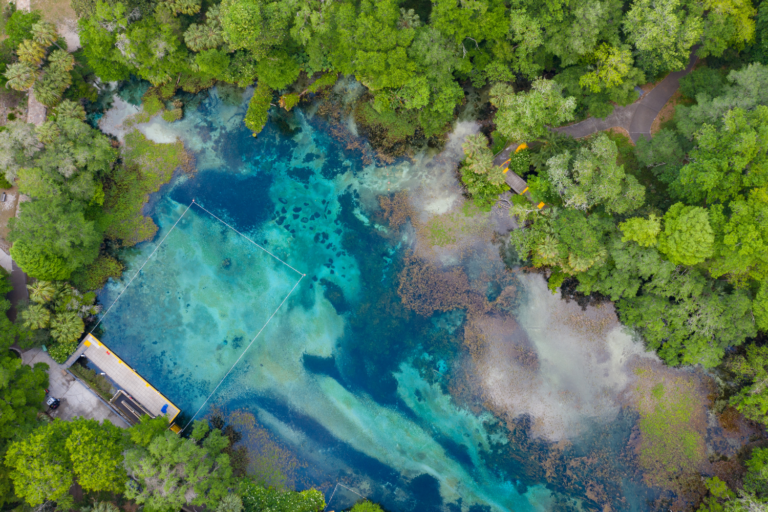Discover the Untouched Beauty of Dry Tortugas National Park
Share This Guide:
Imagine a place where turquoise waters meet unspoiled beaches, vibrant coral reefs teem with marine life, and a historic fortress stands as a sentinel to centuries past. Welcome to Dry Tortugas National Park, one of Florida’s best-kept secrets and a dream destination for adventurers, history enthusiasts, and nature lovers.
In this guide, we’ll uncover everything you need to know about planning your visit, from ferry options to top activities like snorkeling, bird watching, and camping. Whether you’re planning a day trip or spending a night under the stars at Garden Key Campground, Dry Tortugas offers an unforgettable escape.
Ready To Dive In? In This Guide:
- Quick Facts
- How To Access
- Top Things To Do
- Beaches
- Best Times To Visit
- Pet Policy
- Map Widget (google maps, directions)
Quick Facts About Dry Tortugas National Park
- *Accessibility: Only accessible by boat or seaplane.
- Location: About 70 miles west of Key West, Florida.
- Established: 1935 as a national monument, designated as a national park in 1992.
- Size: 100 square miles, with 99% of the park underwater.
- Unique Features: Home to the massive 19th-century Fort Jefferson, coral reefs, and nesting sea turtles.
How to Access Dry Tortugas National Park
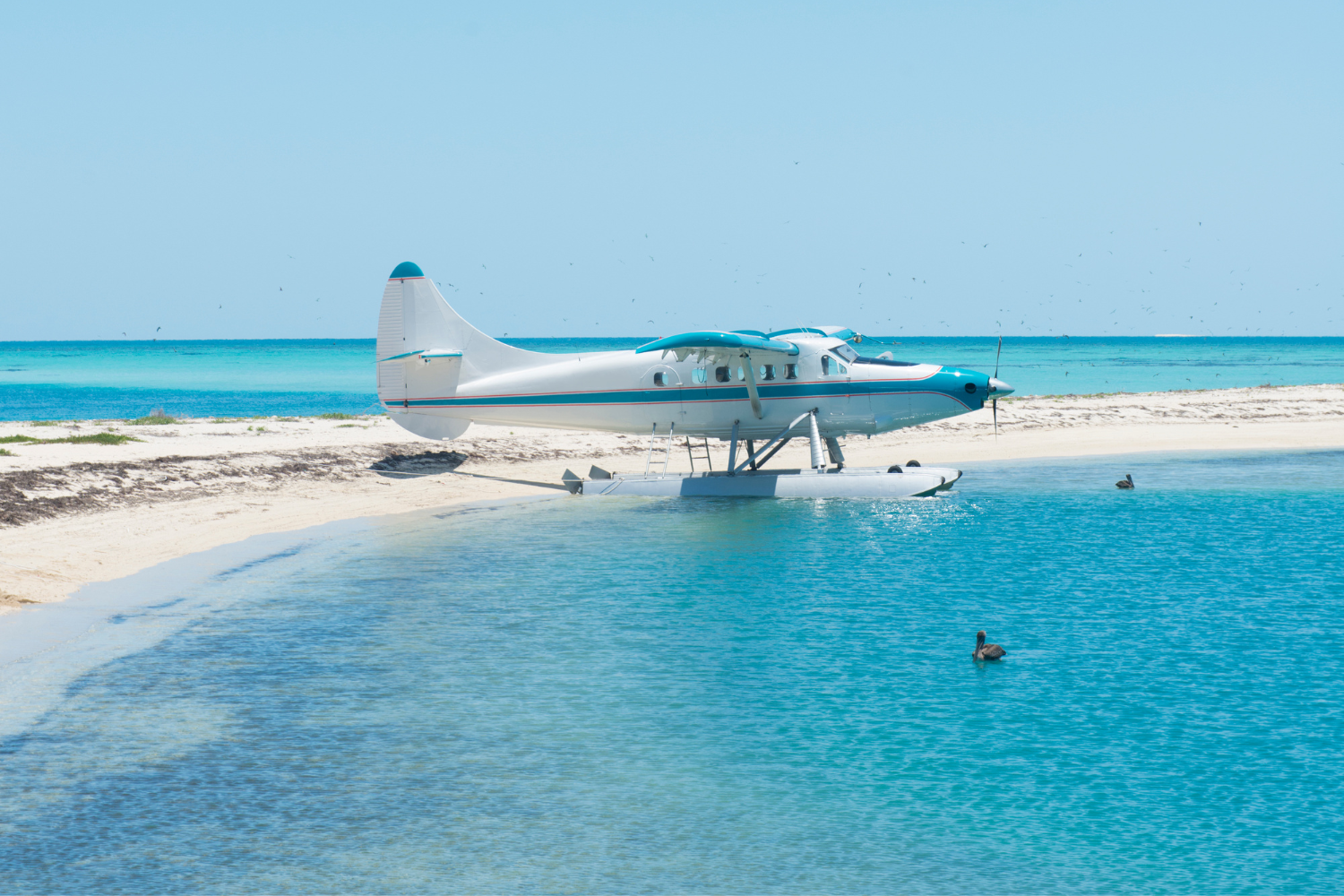
Traveling by Ferry
The Yankee Freedom Ferry is the primary way to access the park. Departing from Key West, the ferry ride takes about 2.5 hours each way and includes breakfast, lunch, and a guided tour of Fort Jefferson. Reservations are highly recommended, as space is limited.
Seaplane Adventures
For a faster and more scenic journey, book a flight with a seaplane operator. The aerial views of the turquoise waters and coral reefs are breathtaking, and the trip takes only about 40 minutes each way.
Top Things to Do in Dry Tortugas National Park
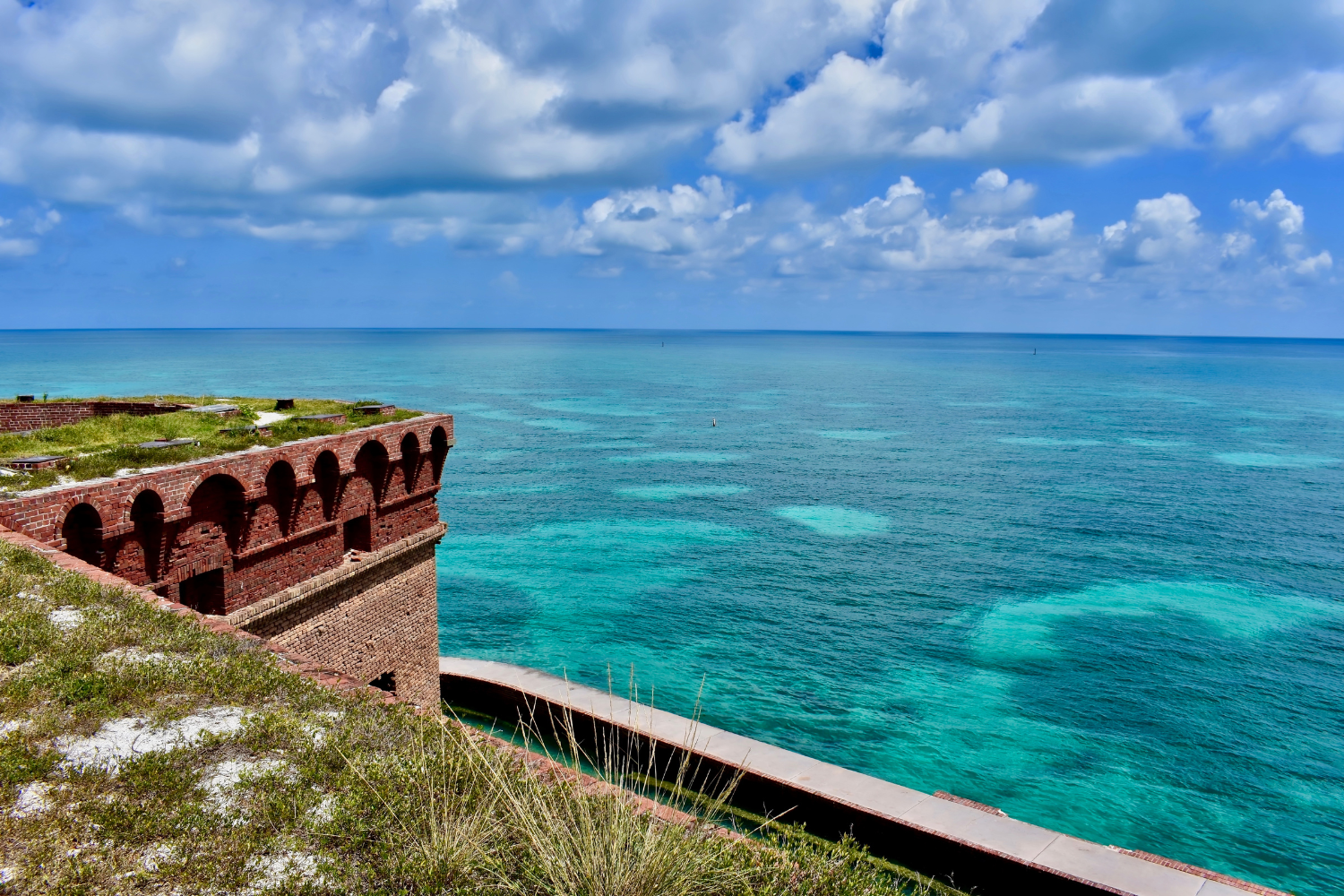
1. Snorkeling and Diving Around Coral Reefs
The park is renowned for its vibrant coral reefs, teeming with marine life. Snorkeling is accessible right off the beach near Fort Jefferson, where you can encounter tropical fish, sea turtles, and rays.
2. Explore Historic Fort Jefferson
Fort Jefferson, one of the largest brick masonry structures in the Western Hemisphere, is a must-see. Built in the 1800s, it was used as a military fortress and later as a prison during the Civil War. Take a guided tour to learn about its fascinating history.
3. Relax on Pristine Beaches
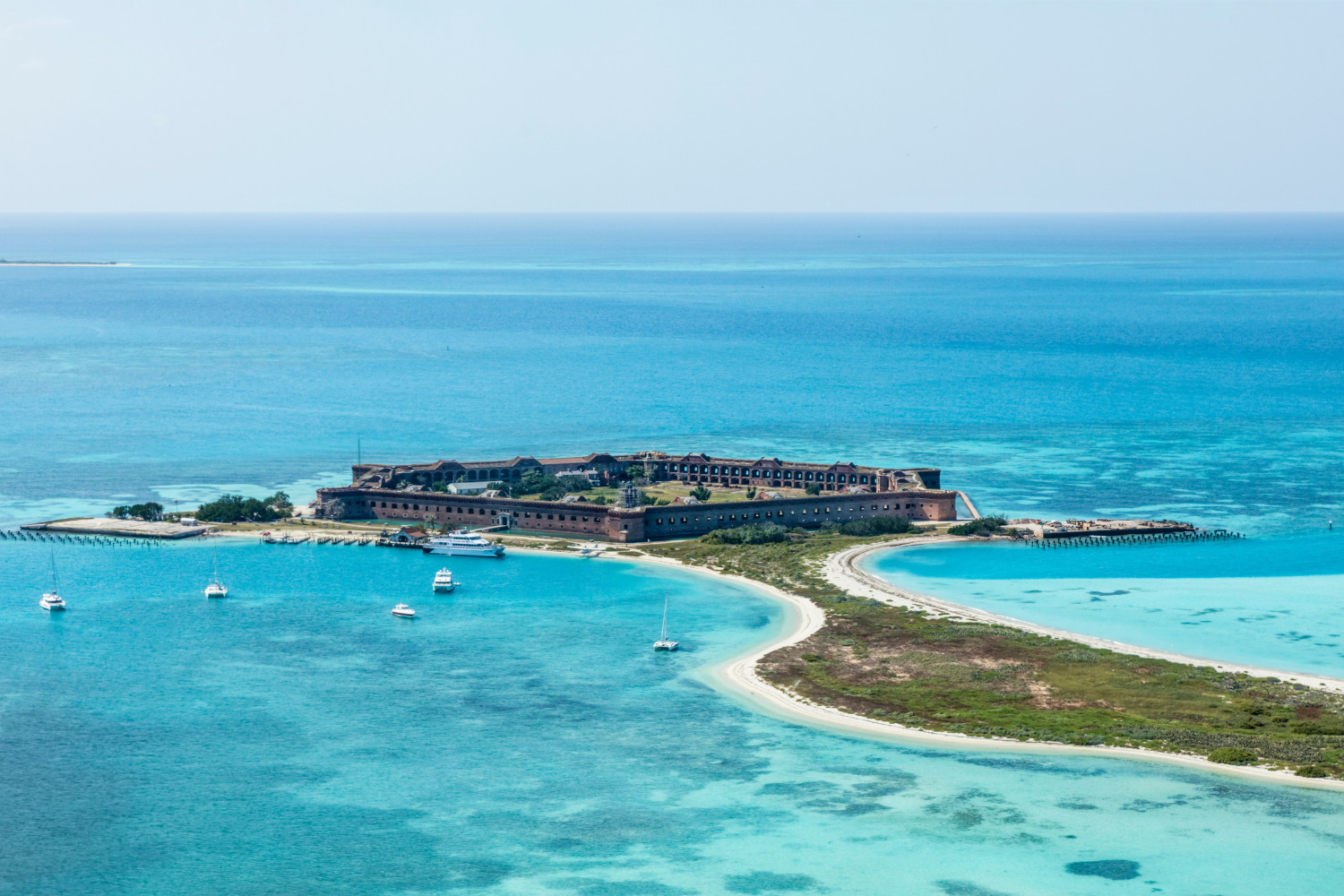
The beaches at Dry Tortugas National Park are some of the most beautiful and secluded in Florida. Each offers unique opportunities for exploration:
Garden Key Beaches
- South Swim Beach: Located near the Yankee Freedom ferry dock, this beach is perfect for swimming and snorkeling. Its calm, shallow waters are ideal for beginners and families. You’ll find excellent opportunities to spot tropical fish and explore the coral formations near the shore.
- North Swim Beach: Situated on the opposite side of Fort Jefferson, this beach offers a quieter atmosphere. It’s a great spot for sunbathing, beachcombing, or wading in clear waters.
Loggerhead Key Beaches
- A short boat ride from Garden Key, Loggerhead Key is the largest island in the park. Its remote beaches are known for their pristine beauty and excellent snorkeling opportunities. The area near the lighthouse is particularly popular for exploring vibrant coral reefs and spotting sea turtles.
Bush Key (Seasonal Access)
Bush Key is accessible only during specific times of the year, as it serves as a nesting site for sooty terns and other seabirds. When open, it’s a serene place for a quiet walk along the shoreline and bird watching.
4. Wildlife and Bird Watching
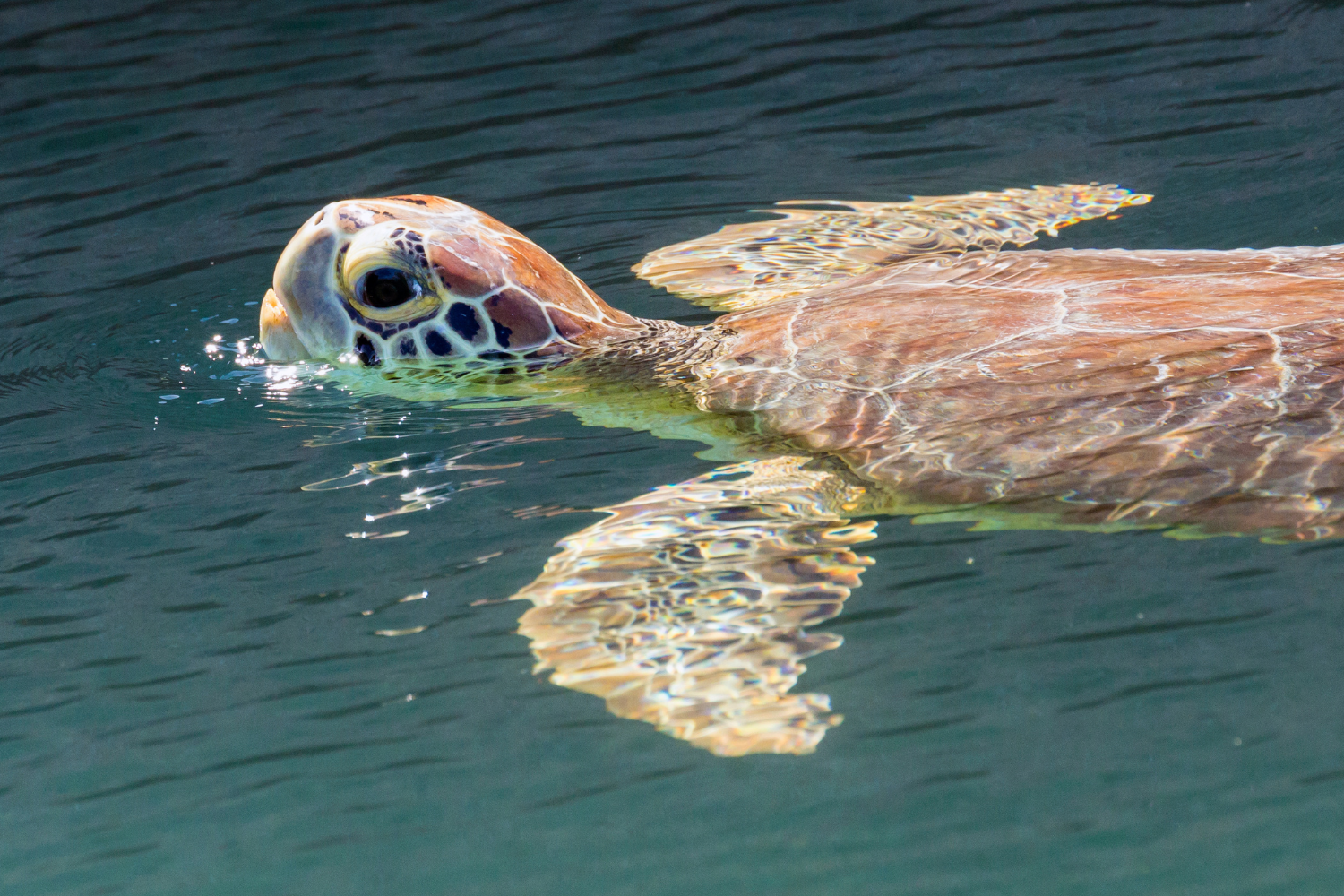
Dry Tortugas is a haven for bird enthusiasts, especially during migration seasons. Look out for sooty terns, brown noddies, and magnificent frigatebirds. The park also serves as a nesting ground for sea turtles.
5. Camping Under the Stars

Camping at Dry Tortugas National Park is a unique way to immerse yourself in its natural beauty. The only campsite is located on Garden Key, offering rustic and remote camping right next to Fort Jefferson. Here’s what makes this site special:
Garden Key Campground
- Seaside Location: The campground is located just steps away from the beach, providing easy access to snorkeling, swimming, and stunning sunsets over the Gulf of Mexico.
- Limited Sites: There are only 10 campsites, ensuring a quiet and intimate experience. Sites are available on a first-come, first-served basis, so arriving early is key. A group site is also available for larger parties (10-20 people).
- Rustic Facilities: The campground offers picnic tables, grills, and composting toilets, but no running water or electricity. You’ll need to bring all supplies, including drinking water and food, as the park follows a strict “pack-in, pack-out” policy.
- Night Skies: With no light pollution, the stargazing opportunities here are incredible. On clear nights, you’ll see the Milky Way stretching across the sky.
Tips for a Great Camping Experience:
Extend Your Stay: While day-trippers leave in the afternoon, campers can enjoy the park in solitude, soaking in the tranquility of sunrise and sunset.
Reserve a Ferry Spot for Camping: Inform the Yankee Freedom ferry operators that you plan to camp, as they have limited capacity for camping gear.
Be Prepared: Pack all necessities, including extra water, food, a flashlight, and a sturdy tent to withstand potential wind.
Best Times to Visit Dry Tortugas
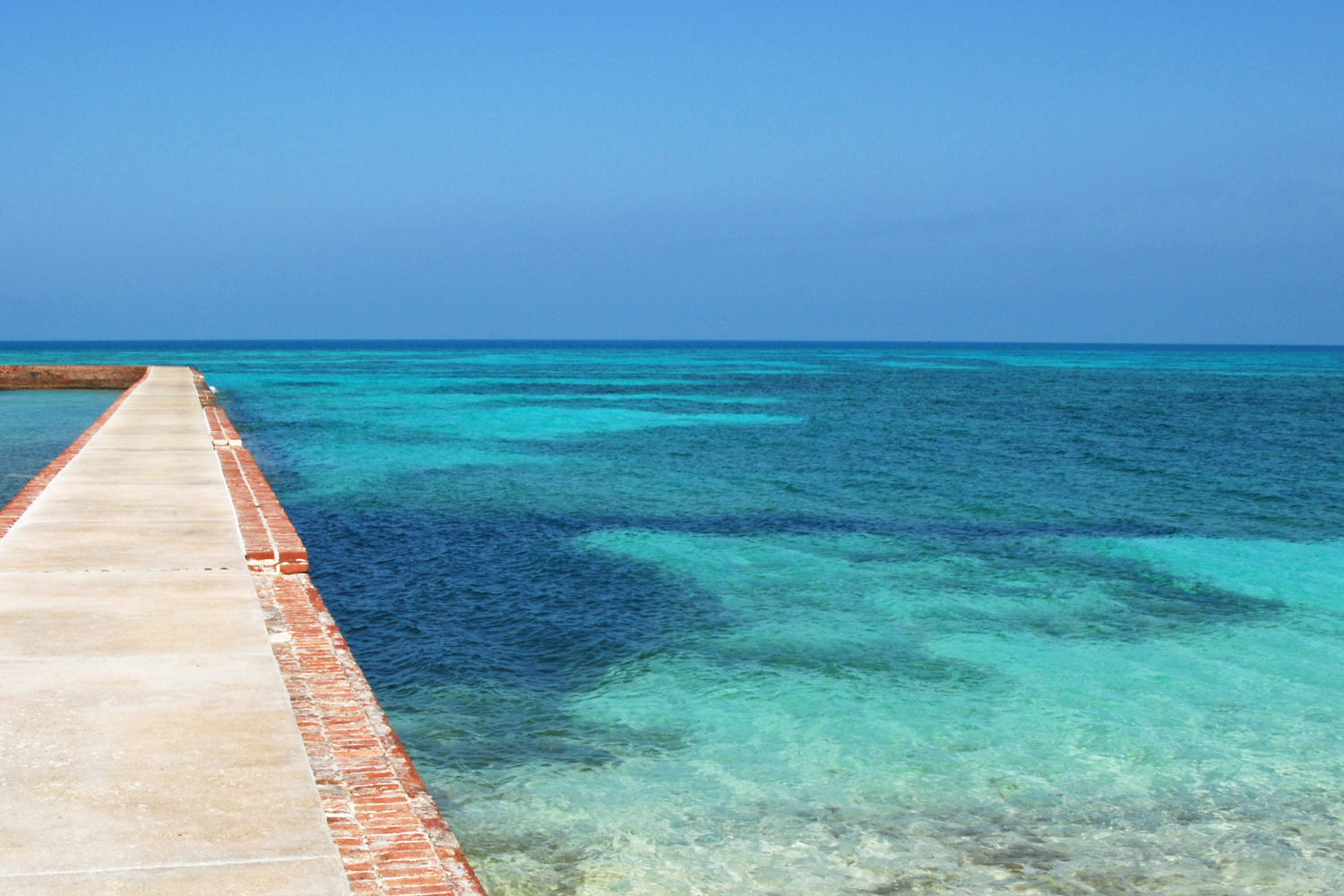
The park is open year-round, but the dry season (November to April) is the most popular time to visit due to calmer waters and cooler temperatures. The summer months (May to October) bring warmer weather and increased chances of afternoon thunderstorms but also fewer crowds.
Pet Policy at Dry Tortugas National Park
Pets are allowed at Dry Tortugas National Park but with specific restrictions to protect the park’s fragile ecosystem and wildlife. Here’s what you need to know about bringing your furry friend:
Where Pets Are Allowed
- Pets are permitted on Garden Key but only in designated areas, such as the open grounds outside Fort Jefferson.
- They are allowed on the beaches and picnic areas, but only if they are leashed (6 feet maximum).
Where Pets Are NOT Allowed
- Pets are not allowed inside Fort Jefferson or any other structures within the park.
- They are prohibited from other islands in the park, such as Loggerhead Key or Bush Key, to protect nesting birds and wildlife.
*Check with the ferry or seaplane operators about their specific rules regarding pets, as not all carriers allow them.

